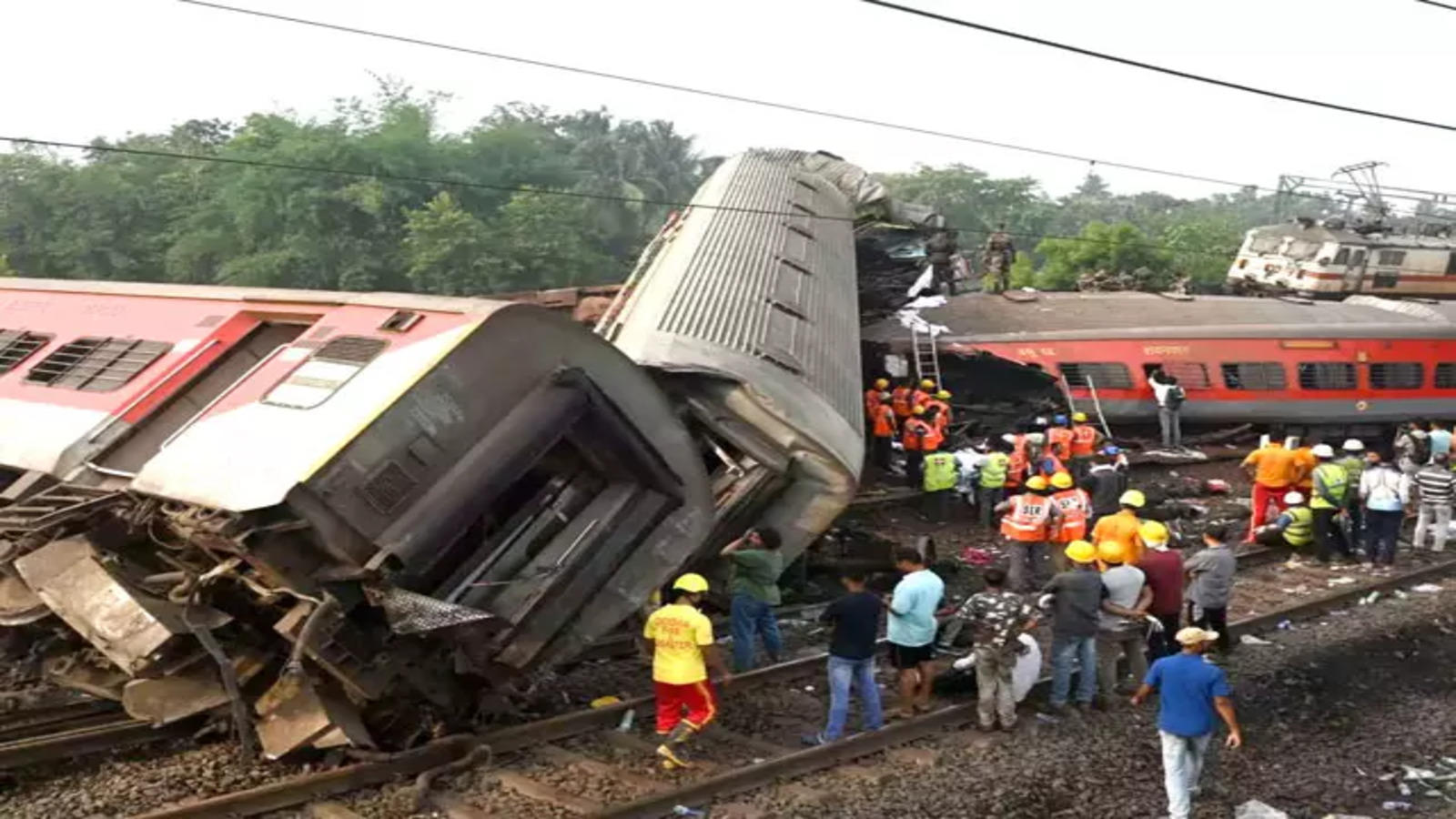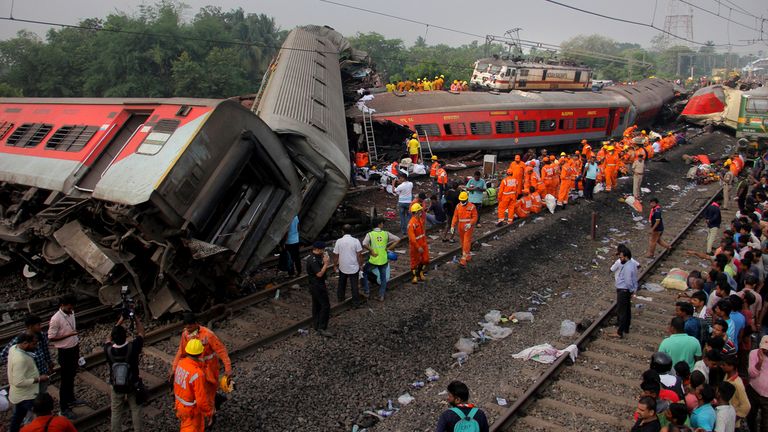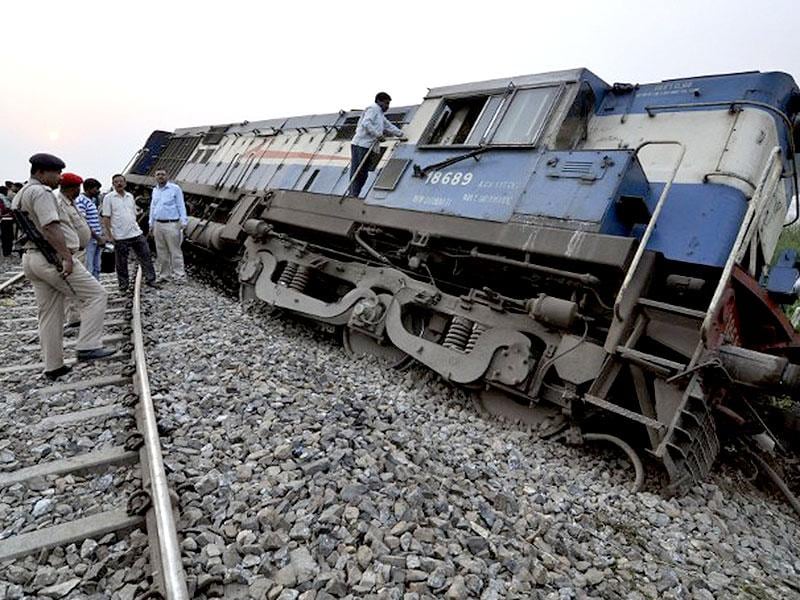
More Than 288 Dead After Odisha Train Accident: PM Dials Vaishnaw
India’s worst train crash in over 20 years occurred when a passenger train derailed onto the adjacent track and was struck by an incoming train. The incident took place in Balasore district, derailing several coaches of the Coromandel Express, which was traveling between Kolkata and Chennai. The derailed carriages ended up on the opposite track and were hit by the Howrah Superfast Express traveling in the opposite direction. The collision resulted in severe damage to the coaches, leaving them crushed and mangled.
Massive recovery operations were initiated, with hundreds of emergency workers involved in searching the wreckage. The cause of the accident is yet to be determined, and an investigation has been launched. Education Minister Dharmendra Pradhan has attributed the crash to “technical reasons.” Survivors and eyewitnesses have described chaotic scenes and the heroic efforts of nearby villagers in rescuing trapped passengers.

Rescue Efforts and Casualties
A swift response was deployed to the crash site, with more than 200 ambulances, doctors, nurses, and rescue personnel rushed to the scene. The state’s chief secretary, Pradeep Jena, confirmed the death toll, initially reported at 288. The injured numbered over 700, with 56 of them sustaining grievous injuries. The recovery operation involved cutting equipment to reach victims trapped in the mangled carriages.
India’s Worst Rail Disaster in Decades
The collision involved three trains and resulted in the deadliest rail disaster in India in two decades. The incident has raised questions about rail safety in a country that has invested significantly in its railway system in recent years. The crash, occurring in the Balasore District of Odisha State, claimed the lives of more than 280 people and injured over 1,100 passengers. The collision was a result of one passenger train striking a stationary freight train at full speed, causing a derailment. Subsequently, a second passenger train collided with the dislocated cars.
Prime Minister’s Visit and Safety Concerns

Indian Prime Minister Narendra Modi visited the crash site to offer condolences and assess the situation. The accident has brought rail safety concerns to the forefront in a country heavily reliant on train transportation. The incident has highlighted the need to address safety issues in the railway system, which caters to millions of passengers daily. While efforts have been made to modernize the railway network, years of neglect have left tracks in a deteriorated state.
Investigation and Accountability
The cause of the crash is still under investigation, with initial reports suggesting a possible traffic signaling failure. An inquiry has been ordered to determine the exact cause and hold those responsible accountable. The railway minister, Ashwini Vaishnaw, assured the public that a thorough investigation would be conducted. Prime Minister Modi expressed his sympathy for the victims’ families and emphasized that the government would leave no stone unturned in ensuring justice for the incident.
As the recovery work continues and the investigation progresses, India mourns the loss of lives and reflects on the need for comprehensive measures to enhance rail safety and prevent such tragic accidents in the future.
The aftermath of the Coromandel Express accident in Odisha has left the nation in mourning as the recovery work transitions to restoration efforts. The scale of the disaster has underscored the importance of addressing rail safety concerns and implementing measures to prevent similar incidents in the future.
The tragic incident has once again brought attention to the need for robust safety protocols in India’s railway system. With millions of passengers relying on trains for their daily commute, ensuring their safety is of paramount importance. The government’s recent investments in upgrading the railway network have been commendable, but the incident serves as a stark reminder that there is still work to be done.
The inquiry into the accident will play a crucial role in identifying the root causes and determining accountability. The suspected traffic signaling failure raises questions about technical malfunctions or human error in managing the signals. A thorough investigation will shed light on the precise sequence of events leading to the collision, helping prevent similar incidents in the future.
Prime Minister Narendra Modi’s visit to the crash site demonstrated the government’s commitment to standing with the affected families during this difficult time. His assurance that those found responsible will face severe punishment underscores the seriousness with which the government regards the incident. The focus now shifts to supporting the families of the victims and ensuring that they receive the necessary assistance and compensation.

Credit : The Guardian( Youtube)
The tragic accident has prompted a broader discussion on the overall safety of India’s rail infrastructure. While significant progress has been made in recent years, it is vital to address any existing loopholes and prioritize ongoing maintenance to prevent accidents due to deteriorating tracks or equipment failures. Strengthening safety training for railway personnel and improving coordination among various departments will be crucial steps toward enhancing rail safety.
As the nation mourns the loss of lives, it is a reminder of the need for continuous vigilance and improvement in railway safety measures. The government, railway authorities, and stakeholders must work together to implement effective safety mechanisms, employ advanced technology, and foster a culture of safety across the railway network.

Credit: Independent ( Youtube)
The Coromandel Express accident serves as a tragic reminder that the safety and well-being of passengers should always be the top priority. It is a collective responsibility to ensure that every individual traveling on Indian railways can do so with confidence, knowing that their journey is safe and secure.
Source:






